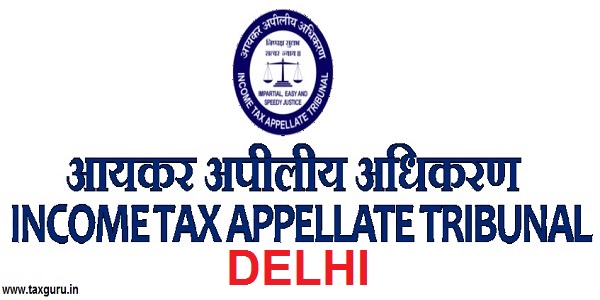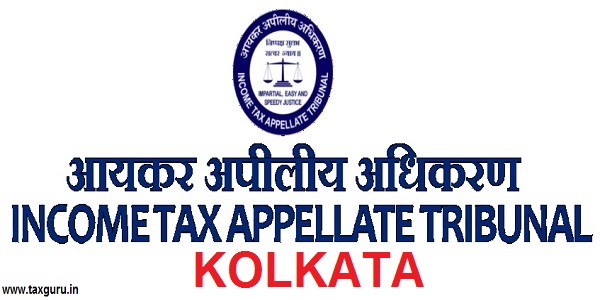
Definition of Workman under Industrial Disputes Act, 1947 in Tamil
- Tamil Tax upate News
- October 30, 2024
- No Comment
- 20
- 16 minutes read
Introduction:
The Industrial dispute Act, 1947 (in short “ID Act”) was enacted by the parliament, on 11 March 1947 and came into force with effect from 1 April 1947, with an objective of providing harmonious relationship between employer and workmen to maintain industrial peace and harmony. The ID Act provides machinery for preventing illegal strikes and lock-out. The Act affords relief to workers against lay-offs, retrenchment, wrongful dismissal victimisation by the employer.
Any person who intends to raise a dispute under the ID Act should fall under the definition of workman and the business activity being carried out by such an industrial establishment shall fall under the definition of ‘industry’. These are the two prerequisites to raise an industrial dispute.
In this article I will be discussing and analysing the definition of ‘workman’ given under ID Act.
Background:
In the ID Act definition of workman u/s 2(s) was originally enacted as follows:
‘workman’ means any person employed (including an apprentice) in any industry, to do any skilled manual or clerical work for hire or reward and includes, for the purpose of any proceedings under this Act, in relation to an industrial dispute, a workman discharged during the dispute, but doesn’t include any person employed in the navel, military or air services of the Crown.
Till 29 August 1956, the definition of workman under the ID Act was confined to skilled and unskilled manual or clerical work and did not include the categories of persons who are employed to do ‘supervisory’ and technical work. The said categories came to be included in the definition with effect from 29 August 1956 by virtue of the Amending Act 36 of 1956. It is, further amended in 1982; for the first time that by virtue of the Amending Act 46 of 1982 the categories of workman employed to do ‘operational’ work came to be included in the definition. By virtue of this amendment those doing non-manual unskilled and skilled work also came to be included in the definition with the result that the persons doing skilled and unskilled work whether manual or otherwise, qualified to become workmen under the ID act.
The present definition of the workman was brought forward by the 2010 Amendment Act.
The second National Commission on labour recommended the gender-neutral expression ‘worker’ instead of workman. The present definition of ‘workman’ is as follows.
‘Workman’ means any person (including an apprentice) employed in any industry to do any manual, unskilled, skilled, technical, operational, clerical or supervisory work for hire or reward, whether the terms of employment be express or implied, and for the purposes of any proceeding under this Act in relation to an industrial dispute, includes any such person who has been dismissed, discharged or retrenched in connection with, or as a consequence of, that dispute, or whose dismissal, discharge or retrenchment has led to that dispute, but does not include any such person–
(i) who is subject to the Air Force Act, 1950, or the Army Act, 1950, or the Navy Act, 1957; or
(ii) who is employed in the police service or as an officer or other employee of a prison; or
(iii) who is employed mainly in a managerial or administrative capacity; or
(iv) who, being employed in a supervisory capacity, draws wages exceeding ten thousand rupees per mensem or exercises, either by the nature of the duties attached to the office or by reason of the powers vested in him, functions mainly of a managerial nature.
Nature of work:
Post amendment of definition of ‘workman’, for an employee working in an industry to fall under the ambit of ‘workman’ definition, it is manifest that he must be employed to do:
a) Manual work
b) Unskilled work
c) Skilled work
d) technical work
e) Operational work
f) Clerical work
g) Supervisory work
The question as to whether an employee is a workman as defined in section 2(s) of the industrial dispute Act has to be determined with reference to his principal nature of duties and functions. such question is required to be determined with reference to the facts and circumstances of the case and materials on record. It is not possible to lay down any straightjacket formula which can be determinative of the real nature of duties and functions being performed by an employee in all cases.
Designation Vs. Nature of duties:
In A Kesava Bhatt v. Sree Ram Ambalam Trust[1] the Kerala High Court held that:
“…the designation of an employee is not of much importance and what is important is the nature of duties being performed by him. The determinative factor is the main duties of the concerned employee and not some work incidentally done. In other words, what is in substance, the work which employee does or what is in substance is the work he employed to do. Viewed from this angle, the employee is mainly doing supervisory work but incidentally or for fraction of time, also does some manual or clerical work, the employee should be held to be doing supervisory work. Conversely, if the main work is of manual, clerical or technical nature, the mere fact that some supervisory or other work is also done by the employee incidentally or only a small fraction of working time is devoted to some supervisory work the employee will come within the purview of the ‘workman’ as defined in section 2 (s) of the industrial Disputes act”.
In Sunita B Vacha Raj vatsaraj v. Karnataka Bank Limited[2] the Bombay held that it is the nature of duty and not the designation which determines whether an employee is a workman. Where an employee has multifarious duties and a question is raised whether he is a workman of someone, the court must find out what are the primary and basic duties of the person concerned and if he is incidentally asked to do some other work, may not be necessarily in tune with the basic duties, these additional duties cannot change the character and status of the person concerned. In other words, the dominant purpose of employment must be first taken into consideration and the gloss of some additional duties must be rejected while determining the status and character of a person.
In Burmah shell oil storage and distribution Co. of India Ltd. V Burmah shell management staff Association[3] the Supreme Court held that:
“the principal is now well settled that an employee must be held to be employed to do that work which is the main work he is required to do even though he may be incidentally doing other type of work”.
An employee maybe doing manual work as well as supervisory work or he may be doing clerical work as well as supervisory work or he may be doing technical work as well as clerical work or technical work as well as supervisory work. In such cases, it would be necessary to determine under which classification he would fall for the purpose of finding out whether he falls in or goes out of the definition of workman. The principle is now well settled that for this purpose, a workman must be held to be employed to do the work which is the main work he is the required to do, even though he may be incidentally doing other type of work.
In Burmah shell oil storage and distribution co. of India Limited case (Supra) the Supreme Court further held that:
“The proper approach in law would be to first see whether an employee is a workman and then see whether any of the exception are attracted. Reading the definition of the word ‘workmen’. we find that it is necessary that a person must be employed in industry to do any skilled or unskilled, manual, supervisor, technical work for hire or reward. Thus, the first thing to find out is whether the employee concerned is employed to do manual or clerical work, be it skilled or unskilled, technical or non-technical. If that be so, then he would be workman even if he is employed in a supervisory capacity unless by virtue of being employed in supervisory capacity his wages exceed rupees 500 or his duties or powers convert his employment into one mainly of managerial nature. On the other hand, if manual or clerical work is only a small part of the duties of the person concerned and incidental to his main work, which is not a manual or clerical then such a person would not be a workman”.
Predominant or primary duty is the deciding factor:
Status of an employee is determined by the predominant duties being performed by him during the course of his employment. It is equally well settled that designation or nomenclature/name of the post is immaterial while dealing with the question of an employee being a workman.
Principle/primary/predominant duties that the employee performs which form the criteria to determine his status as a workman as held in a number of judgements.
In S.K. Money v. Carona Sahu Company Limited[4], the Hon’ble Supreme Court held as under:
“9. After giving our careful consideration to the facts and circumstances of the case and the submissions made by the learned counsel for the parties, it appears to us that whether or not an employee is a workman under Section 2(s) of the Industrial Disputes Act is required to be determined with reference to his principal nature of duties and functions. Such question is required to be determined with reference to the facts and circumstances of the case and material on record and it is not possible to lay down any strait-jacket formula which can decide the dispute as to the real nature of duties and functions being performed by an employee in all cases. When an employee is employed to do the types of work enumerated in the definition of workman under Section 2(s), there is hardly any difficulty in treating him as a workman under the appropriate classification but in the complexity of industrial or commercial organisations quite a large number of employees are often required to do more than one kind of work. In such cases, it becomes necessary to determine under which classification the employee will fall for the purpose of deciding whether he comes within the definition of workman or goes out of it”.
In Hussan Mithu Mhasvadkar v. Bombay Iron & Steel Labour Board and Another[5], the Supreme Court held as follows: –
“10. No doubt, in deciding about the status of an employee, his designation alone cannot be said to be decisive and what really should go into consideration is the nature of his duties and the powers conferred upon as well as the functions assigned to him. Even if the whole undertaking be an industry, those who are not workmen by definition may not be benefited by the said status. It is the predominant nature of the services that will be the true and proper test“.
Whether a Regional Sales Manager falls under the definition of workman:
The substantial question of law before the Supreme Court in M/s Bharati Airtel Limited v. A.S.Raghavendra[6] is whether the Regional Sales manager falls under the ambit of ‘workman’. The factual background of this is case is, the respondent was appointed as a Regional business head heading a team of 4 account managers of the four Southern States. Manager’s working under the respondent falls under the category of B1 and B2 salary levels, which are managerial levels. The respondent raised an industrial dispute, with a contention that he was forced to resign by the company and seek reinstatement with back wages. The Karnataka Government referred the dispute for adjudication. The labour Court held that the respondent performing the duties of a manager and does was not a workman within the meaning of section 2 (s) of the ID Act which was appealed to high court. The Karnataka High Court while allowing the petition partially, held that since there was an absence of power to appoint dismiss or hold disciplinary enquiries against other employees the respondent held to be a workman and reminded the matter back to Labour Court. Decision of the Karnataka High Court was challenged in the Supreme Court. The Supreme Court considering the various roles performed by the respondent in his previous employment and duties being performed in the current position, held that duties are supervisory and managerial in nature. The Supreme Court further held that mere absence of power to appoint, dismiss or hold disciplinary inquiries against other employees, would not and could not be sole criterion to determine whether a person falls under the ambit of ‘workman’.
Conclusion:
In the light of various decisions of the Supreme Court, to determine whether a person or an employee fall under the ambit of workman, it is essential to consider the predominant duties being performed by the employee, the designation or nomenclature of the post is irrelevant. It is imperative on the part of the management to consider the judicial principles laid down in deciding whether a person is a worker or not while taking any disciplinary action or terminating the services of redundant workforce.
[1] 1990 1 LLJ 192 (Ker)
[2] 1999 3 LLN 497 (Bom)
[3] (1970)2 590; (1970) 3 SCC 378
[4] 1994 -II-LLJ-1153
[5] (2001) 7 SCC 394: AIR 2001 SC 3290
[6] CA No. 5187 of 2023; dt. 2 April 2024

Author: Narahari P. MBA, LLB, Advocate, Labour & Intellectual Property Law Advisor, Reg. Patent Agent



